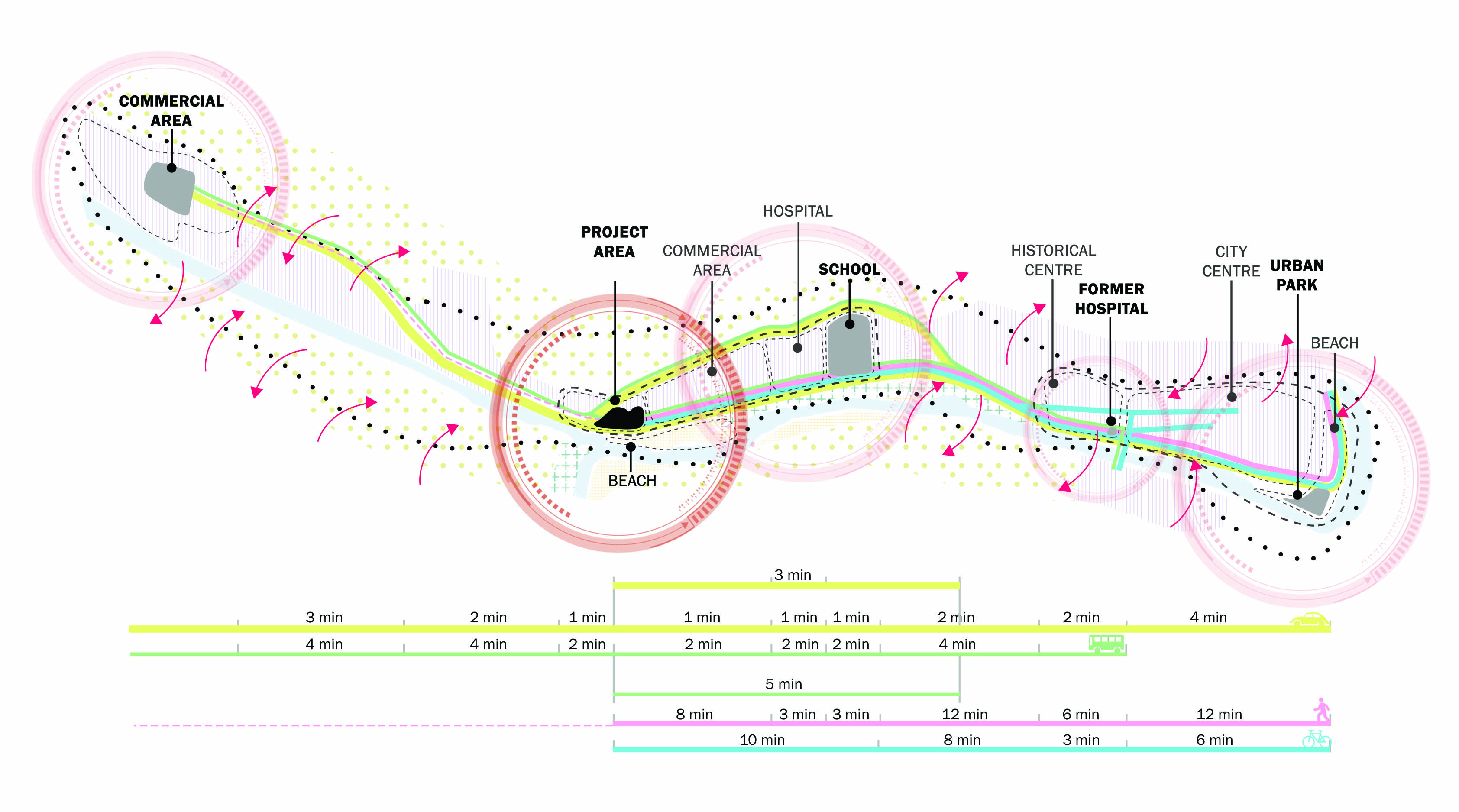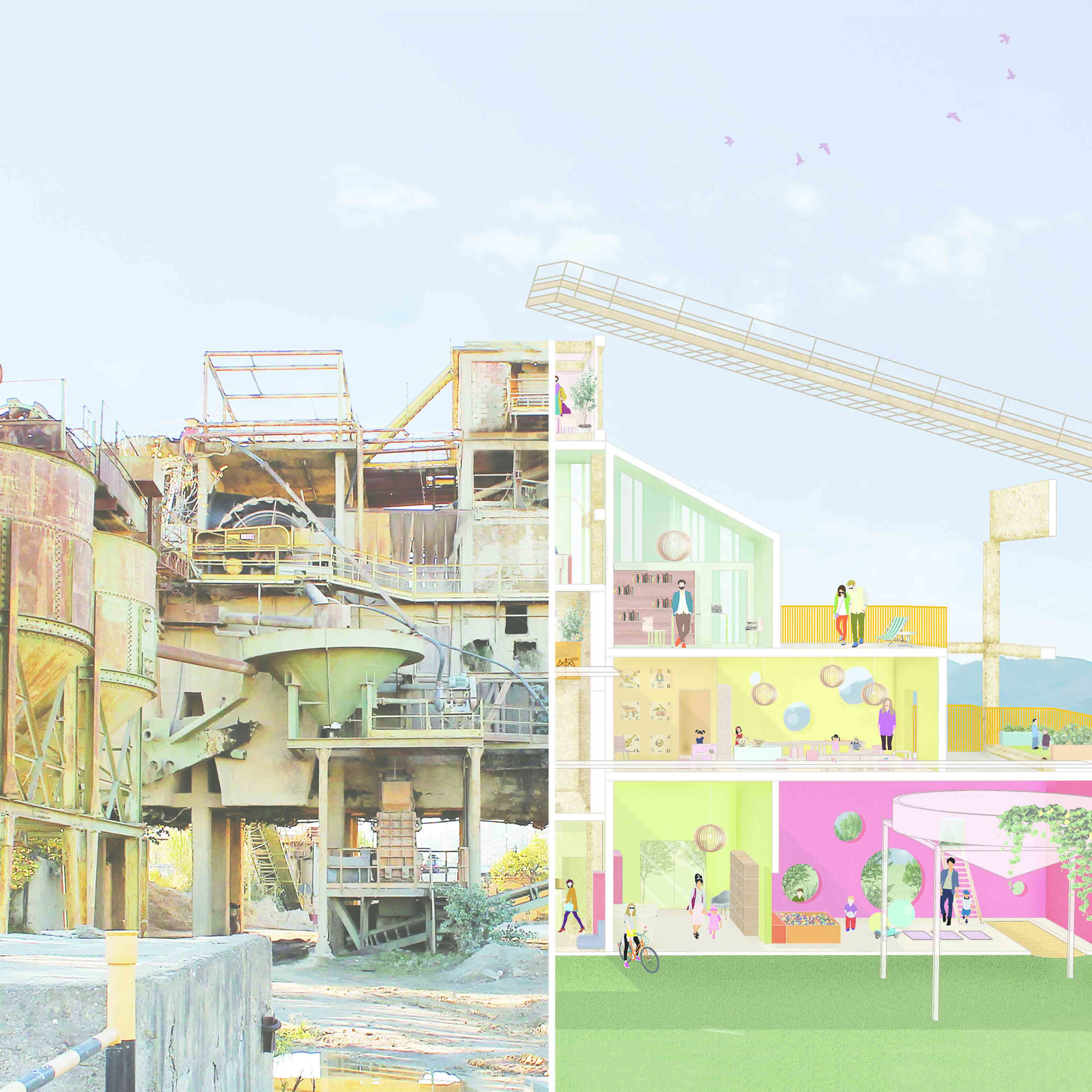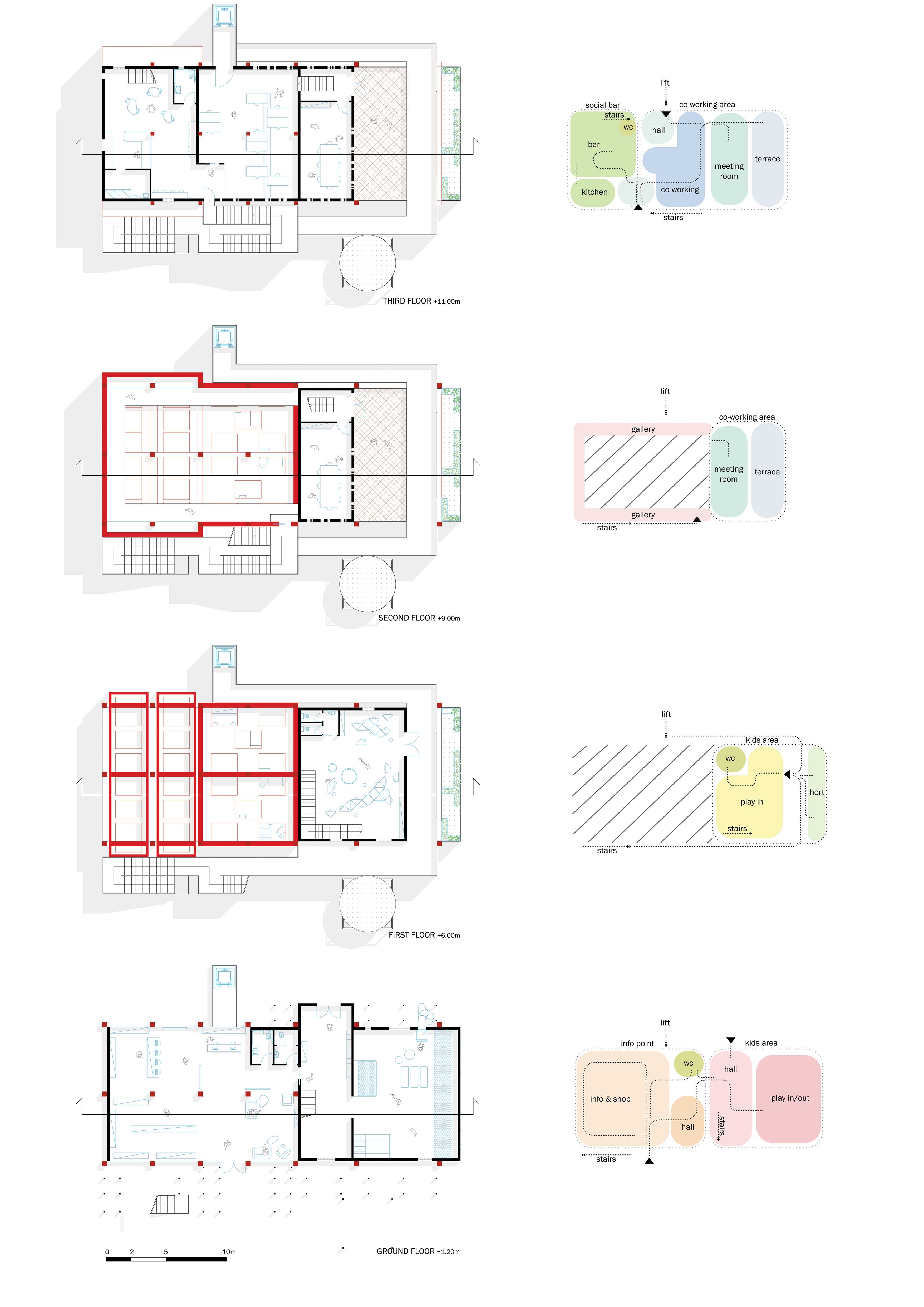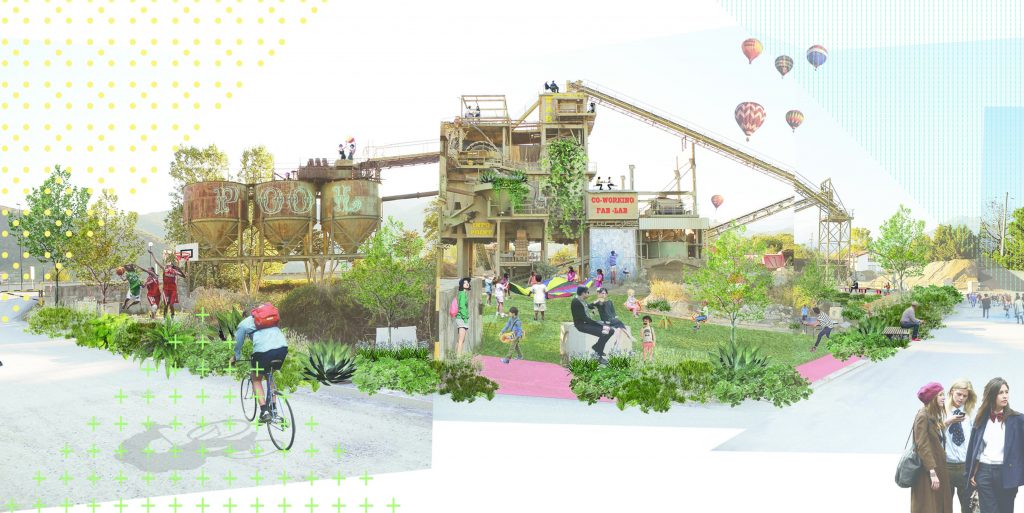Real[action] & Rel[action]: this means real actions to generate active relationships.
The real actions are punctual and global interventions on the territory, that will generate active and continuous relationships to integrate parts of a city that today is fragmented.
The project, thanks to its central position, represents a starting point for developing this strategy through the reactivation of a former industrial area.
It is conceived as a public park, organized in 7 operational steps, containing sharing and collaboration functions, including sports areas, a co-working space and cultural facilities.

The city of Albenga has been framed under several aspects: the geographical position, the history and the society that characterizes it. Its physical characteristics, in connection with the surrounding environment and with other neighboring municipalities have been described and analyzed. A more specific analysis was carried out in three different ways. The first is more objective and focused on the real city. The second taking into account the subjective vision of individual users. Finally, the third modality, called "between reality and perception", considers both the aspects concerning the real city, both those highlighted by its users and the perception that they have of it. It was later identified this area from which start to apply the concepts of local and global strategy, which is located in a strategically central point in the city of Albenga from developing an open and functional system.

The project is the bearer of the principles of sharing, participation, and relationship and its realization is divided into different functional phases. The functions inside are intersected with each other and have variable and hybrid characteristics. This functional patchwork activates the relationships between the various components of the park and with the rest of the context. We decided to carry out a thesis on Albenga to understand how it could be working on a city whose deficiencies are already known but also its potentialities and how these can serve as a starting point to elaborate a project, perhaps a bit utopian, but which highlights some aspects that are often considered secondary, such as participation, public spaces and play.

The Board:
![REAL[ACTION]&REL[ACTION] – Albenga between reality and perception: a partecipated project for the reuse of an ex industrial area. Board](https://www.archistart.net/wp-content/uploads/2016/09/ATA2018-71a46.jpg)





